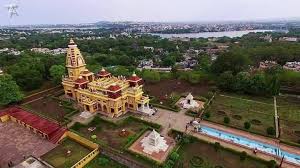Across the misted valleys and terraced slopes of Jashpur, a quiet agricultural renaissance is unfolding. Under the leadership of Chief Minister Vishnudev Sai, Chhattisgarh’s horticultural sector has transitioned from being a subsidiary pursuit to a vanguard of rural prosperity. In just twenty two months, more than 1,550 hectares of land have been brought under horticultural cultivation, directly benefitting over 2,600 farmers. This is not merely an expansion of acreage, it is a transformation of aspiration.
By promoting diversification through fruit, vegetable, spice, and protected cultivation, the state has steered its agrarian economy toward resilience. The results speak eloquently: 550 hectares under fruit crops such as mango, pear, and litchi now form the long term backbone of sustainable income for nearly a thousand farmers. Similarly, the expansion of vegetable cultivation over 938 hectares has drawn more than 1,400 cultivators into the fold of a vibrant, year round production cycle. Beyond income, it has invigorated local markets, creating ripple effects across the rural economy.
The progressive inclusion of spice crops represents yet another dimension of innovation. The 71 hectares now dedicated to coriander, ginger, and turmeric have brought participation from 164 farmers, offering new streams of revenue and aligning with the state’s goal of creating high value, low footprint cropping systems. The rising domestic and export demand for these crops augurs well for Chhattisgarh’s evolving agricultural identity.
Perhaps the most significant step forward has been in the realm of protected cultivation. Through the National Horticulture Mission, farmers have adopted modern techniques such as shade net houses and plastic mulching over an area of 70 hectares, benefitting 75 cultivators. This embrace of technology signals a generational shift, from dependence on seasons to the confidence of controlled environment agriculture. Year round productivity and superior quality have replaced uncertainty with assurance.
The Sai administration’s emphasis on technology, market connectivity, and allied support services has given Chhattisgarh’s farmers not just subsidies, but skills and sustainability. The push for horticulture is thus not a mere policy success, it is a philosophical statement that prosperity grows best when rooted in diversity, knowledge, and innovation.
Jashpur’s transformation offers a template for agrarian India. As climate uncertainties loom large, and monocultural practices reach their ecological limits, the quiet success of Chhattisgarh’s horticultural drive carries a profound message that the future of Indian agriculture lies not in expansion alone, but in evolution. Fields once limited to survival are now blossoming into symbols of wealth and wisdom.
This green renaissance is proof that with visionary leadership, scientific method, and community spirit, rural India can indeed cultivate its own prosperity.




